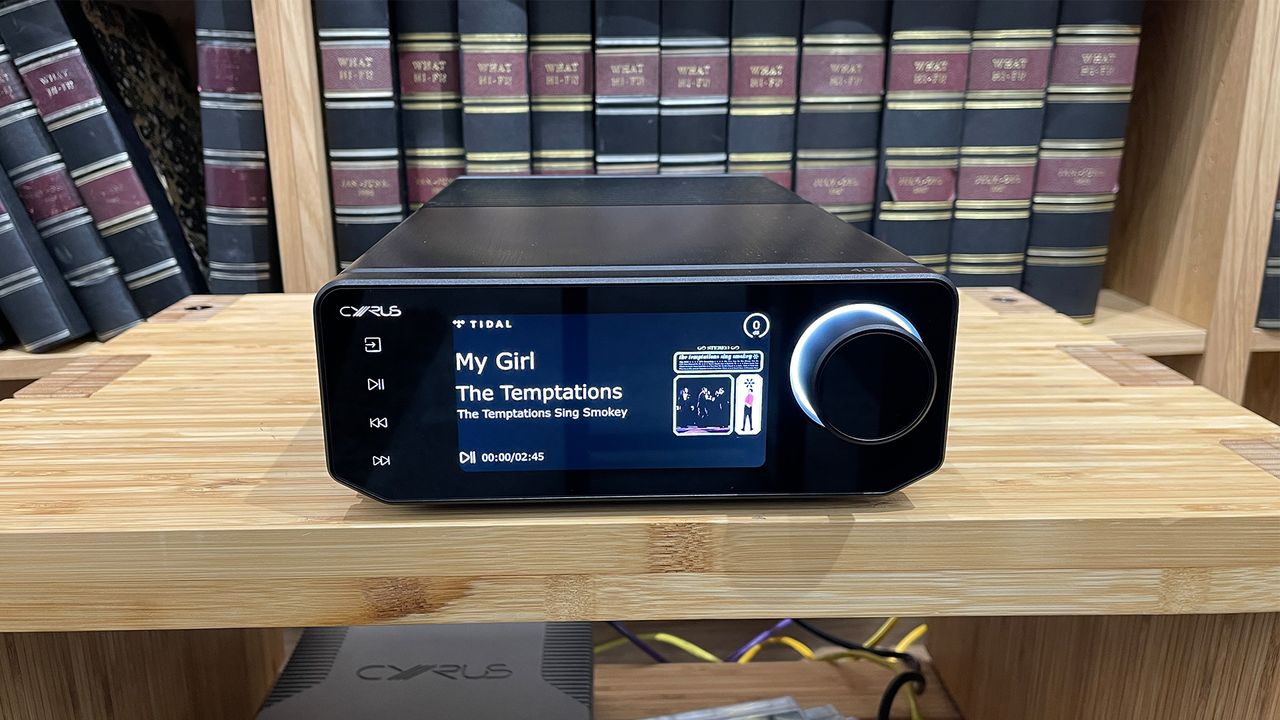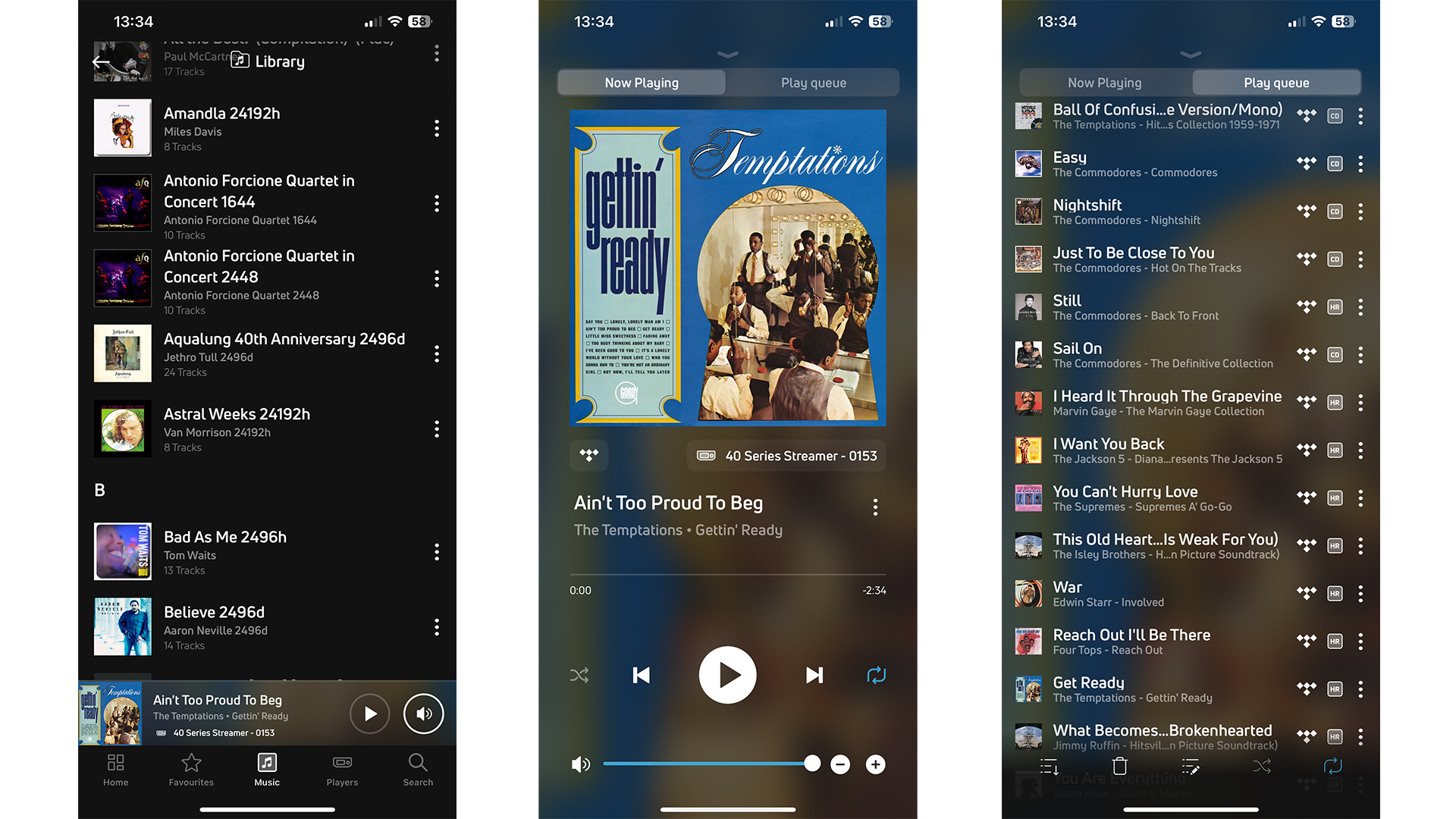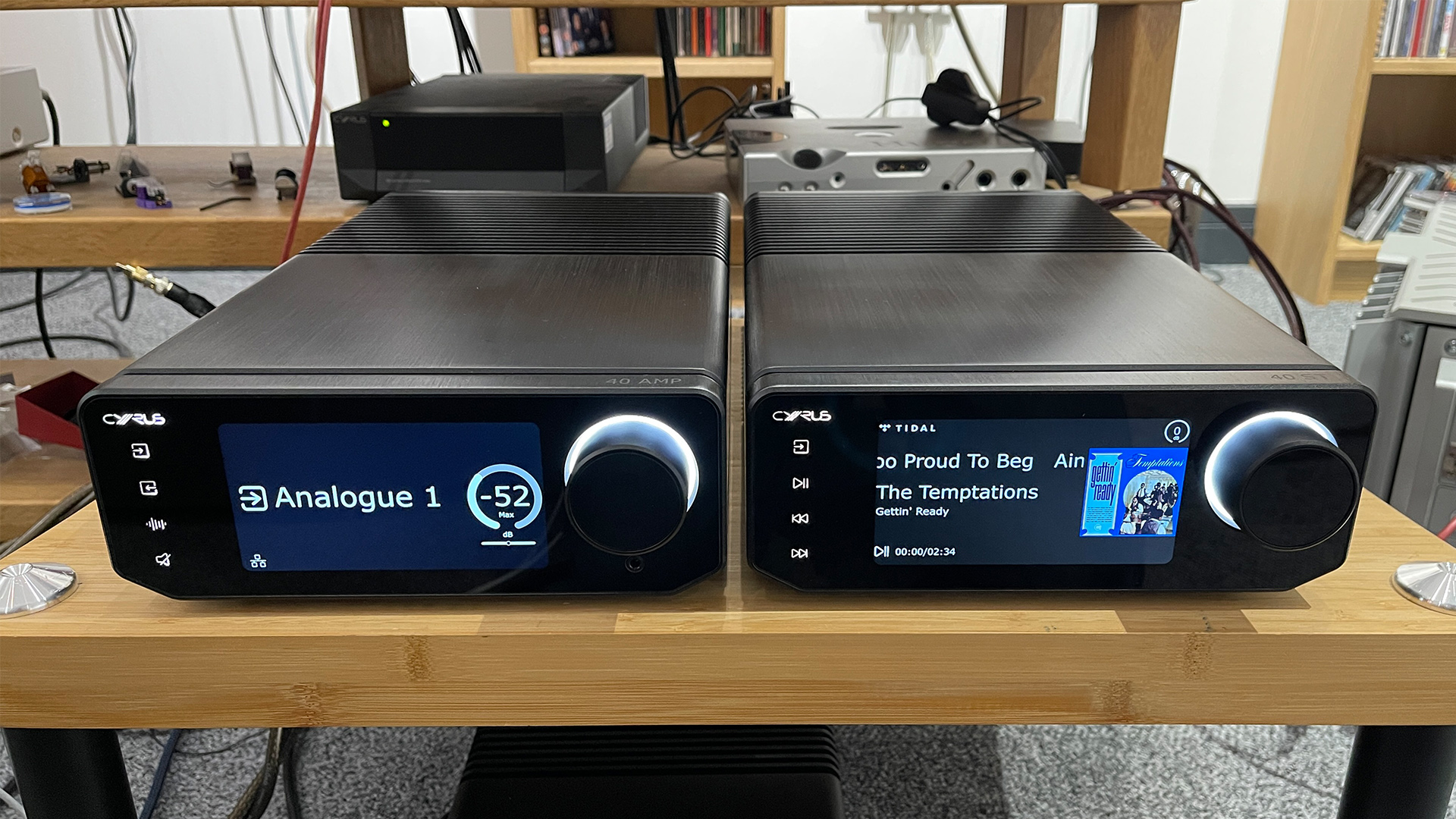
Cyrus Audio sees the launch of its 40 Series as something of a new beginning. While the brand has produced plenty of exceptional products since it was founded in the early ’80s, it is also fair to say that it has struggled to hold onto the limelight in recent years.
Beyond the extraordinary success of its CDi CD player – an 11-time What Hi-Fi? Award-winner in its price category no less – and the Phono Signature phono stage, there is little else that Cyrus has produced over much of the last decade that has truly excited us.
Even the recently introduced premium XR range seems more like a reheat of past efforts than a determined effort to take a step forward. The new 40 Series products are different, with an all-new design that looks firmly to the future.
If our experience with the Cyrus 40 ST music streamer is anything to go by, this new range could well be good enough to kick-start the brand’s resurgence.
Currently, the 40 Series consists of four products: the 40 ST streamer we have on test here, an integrated amplifier (the 40 AMP at £3995 / $4995 / AU$6499) and a one-box CD player (40 CD costing £2995 / $3995 / AU$4999). The final member of the quartet is the 40 PSU (£2495 / $3495 / AU$4499) outboard power supply, which in traditional Cyrus fashion offers an upgrade path for the other three units.
The company’s products have always tended to be upgradable and we’re thankful that Cyrus has continued to offer such an option. We have samples of the amplifier, CD player and PSU in our test rooms and the reviews will follow in due course.
Design & build

Cyrus has used the same distinctive casework in its core hi-fi products since the early ’90s. That die-cast chassis has been much vaunted for its rigidity and clever design over the years and continues to see service in the brand’s Classic Series of components. But time, manufacturing techniques and technology move on.

Outputs Line level x 2, digital coaxial and optical
Headphone output? No
Max file resolution 24-bit/192kHz PCM, MQA
Streaming features UPnP, AirPlay 2, internet radio, Spotify Connect, Tidal Connect, Amazon Music, Qobuz, Roon Ready
Dimensions (hwd) 8.8 x 22.0 x 38.5cm
Weight 4.8kg
The anodised aluminium casework for the 40 Series is all new and all the better for it. While it follows the half-width proportions associated with the brand, the designers have taken the opportunity to grow it just a little in every direction.
This gives a little more volume inside, allowing extra leeway with the internal layout and componentry. While this increase of space doesn’t matter so much in something like the streamer, in the amplifier it proves extremely useful.
We like the look of the new range too. To our eyes, the styling looks clean and modern while still maintaining important links to the brand’s heritage. It feels solid, rigid and ever so classy.
The 40 ST’s glass front is uncluttered while packing a pleasingly crisp 5-inch TFT screen that’s clear enough to read from the other side of our test room. Five touch-sensitive buttons run vertically on the left, with the Cyrus logo being the power-on switch. Neat.
On the right, you will see a control dial, which is beautifully precise in use with no sense of wobble on our review sample. It controls the 40 ST’s output level and has a neat LED ring around it that can be adjusted for brightness.
Features

Around the back, you will find an Ethernet connection (wireless is possible too), coax/optical digital ins and outs and two pairs of single-ended stereo analogue outputs. There is also a USB Type A port for playing music from a suitable storage device. Most of the 40 ST’s rivals also include a USB Type B connector so that a computer can be used as a source, but that’s not on offer here, and that’s a shame.
That’s not the only omission. Also missing are Chromecast capability and Bluetooth. While we accept that Bluetooth isn’t necessarily the best quality way to get sound into your system, it is convenient and useful on occasions. Similarly, we would rather have the option of Chromecast, though the availability of AirPlay 2 softens that blow a bit. MQA and Roon compatibility are on offer though.
For a new product, the Cyrus 40 ST is surprisingly limited when judged by on-paper specifications. While it covers all the usual bases when it comes to playing music from NAS units over a home network, internet radio and streaming services (Spotify Connect and Tidal Connect are included along with Amazon Music, Qobuz and other less well-known alternatives) we’re surprised that file compatibility when streaming is currently limited to 24-bit/192kHz PCM with DSD not even on the menu.
It is common for even budget streamers to include such features, let alone units at this premium price level, so that’s a disappointment.

This is down to the use of a BluOS streaming module, also seen in streaming products from Bluesound, Roksan and Dali among others. In our experience, the BluOS app is one of the better ones on the market as far as usability and stability are concerned, but this limitation in terms of hi-res file compatibility may be a deal breaker for some.
In mitigation, we suspect the module’s current capability will be fine for the vast majority of users – PCM files above 24-bit/192kHz remain a niche interest for the most part. The lack of DSD is a bigger issue for us, but we do know that updates to BluOS are incoming which will allow it to work with files up to DSD256. The timing of those updates is unknown at the moment, though.
We do know that at the heart of the 40 ST’s digital-to-analogue circuitry sits the latest ESS Sabre ES9039Q2M chip and that is specified to resolutions of up to 32-bit/768kHz PCM and DSD1024.
There are eight user-selectable digital filter options, and as is usual the differences between them are subtle. The choice comes down to your system and taste, but we prefer Minimum Phase or Linear Phase filter options in Slow Roll Off mode. These sound the most natural and fluid to us.

In use, the Cyrus 40 ST proves a pretty slick operator, bar the odd clunky moment with the unit’s control software. It’s mostly good, but little things like the way the volume level indicator doesn’t quite work in perfect synchronisation with the control dial rob it of class-leading polish.
Our sample is a very early unit and we’re sure things like that can be ironed out pretty quickly. As expected, the BluOS streaming app works well, and we are soon connected to our network, logged into Tidal and plumbed into the What Hi-Fi? reference system.
The bulk of our testing is done with the 40 ST feeding our Burmester 088/911 Mk III amplifier and ATC SCM50 speakers. We also try the Cyrus with its partnering 40 Series amplifier and PMC’s Cor integrated driving a pair of Epos ES-14N speakers. Audiolab’s Award-winning 9000N music streamer is warmed up for comparison and our usual Naim ND555/555 PS DR streamer is also included as a reference.
Sound

As we work our way through our music collection it becomes clear that the Cyrus 40 ST is an impressively capable performer. It offers a level of clarity and precision that we haven’t heard bettered anywhere near this price. Comparisons with the excellent Audiolab 9000N (£2499 / $3499 / AU$5499) are interesting.
The Audiolab’s presentation is less forced, impressing us with its finesse, tonal neutrality and spaciousness. It is a subtle, even-handed performer that steps out of the limelight, leaving its focus firmly on the music. We’re reminded in no uncertain terms of why it won the Product of the Year accolade for music streamers in 2024’s Awards.
Switching to the Cyrus is a bit of a shock. It sounds cleaner, crisper and more direct, finding another layer of textural detail in instruments and voices. Dynamically, it is impressively expressive, rendering low-level shifts in intensity elegantly, and delivering large-scale orchestral crescendos with real conviction, leaving the Audiolab sounding a little subdued in comparison.
As we listen to Beethoven’s 9th Symphony it is hard not to be impressed by the Cyrus’s performance. It sounds big and brawny when required but still has a lightness of touch when the music demands it. Despite the slight forwardness in its presentation, we have no issue with the tonal balance.
Past Cyrus products, for all their talents, could sound a little bright and lightweight, but that’s not the case here. The 40 ST is essentially neutral and for all its crisp precision, delivers music in a natural and convincing way.
This streamer’s stereo imaging is wonderfully crisp. Its soundstage is focused and beautifully arranged, superbly conveying the layout of the orchestra, as well as the subtle clues that help to define the acoustics of the recording venue. There is a welcome sense of composure here too, with the 40 ST staying organised and in control even when the music becomes demanding.
This Cyrus also knows how to have fun, as our musical journey extends to the likes of Prince and Florence And The Machine. It goes full John Travolta (in his Saturday Night Fever days) when given appropriate source material and delivers songs such as Kiss and You’ve Got The Love with their infectious energy fully intact.
When it comes to rhythmic drive and outright punch we can’t think of a rival that does better, though Naim’s ND5 XS2 would be in with a shout. That said, love the Naim as we do, we still think the 40 ST is the more precise and insightful performer.

Despite all the clarity of offer, this Cyrus has enough in the way of refinement to keep poor recordings listenable. We play Bruce Springsteen’s Terry’s Song – a lovely, heartfelt piece of music but a pretty coarse recording – and the 40 ST reveals all the rough edges while still rendering the music’s message with conviction. The Boss’s voice comes through with a full dose of passion and energy, just as it should.
Adding the 40 PSU outboard power supply has obvious benefits, which is a relief given the hefty price. With the power supply connected, the 40 ST’s sonic presentation gains in scale, power and authority. It all sounds notably more effortless, with dynamic contrasts delivered with greater muscle and the already impressive low-end stomping even harder.
Pleasingly, there is no compromise in terms of agility or grip at bass frequencies. With the outboard power supply, detail levels improve and the 40 ST’s sound becomes more fluid and natural. The one slight downside is that the standalone streamer’s exceptional rhythmic abilities seem to take more of a back seat, but not to the extent where our enjoyment is affected significantly.
Verdict

We’re no strangers to fine-sounding Cyrus products, but this 40 ST streamer surprises us with its breadth of talent and even-handed nature. It doesn’t favour any particular type of music and is a strong enough all-rounder to shine in a wide range of systems.
The gaps in specifications are an issue of course, and only you can decide whether they are enough of a negative to become an issue. We suspect that for most people they won’t be a problem.
Still, we can’t wait to hear the rest of this new 40 Series. If the amplifier and CD player match the streamer’s talents then this new range could really reignite the brand’s fortunes.
First reviewed: December 2024
SCORES
- Sound 5
- Build 4
- Features 3
MORE:
Read our review of the Audiolab 9000N
Also consider the Naim ND5 XS2
Nick Clarke interview: Cyrus Audio's MD has an eye to the future
Best music streamers: top network audio players tested by our experts







